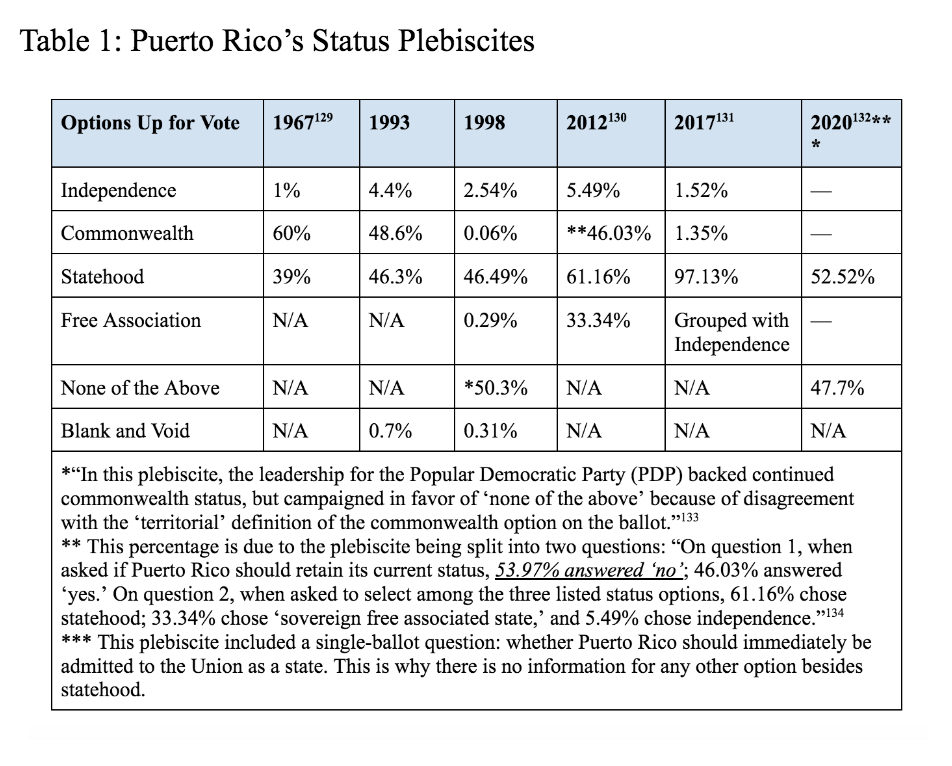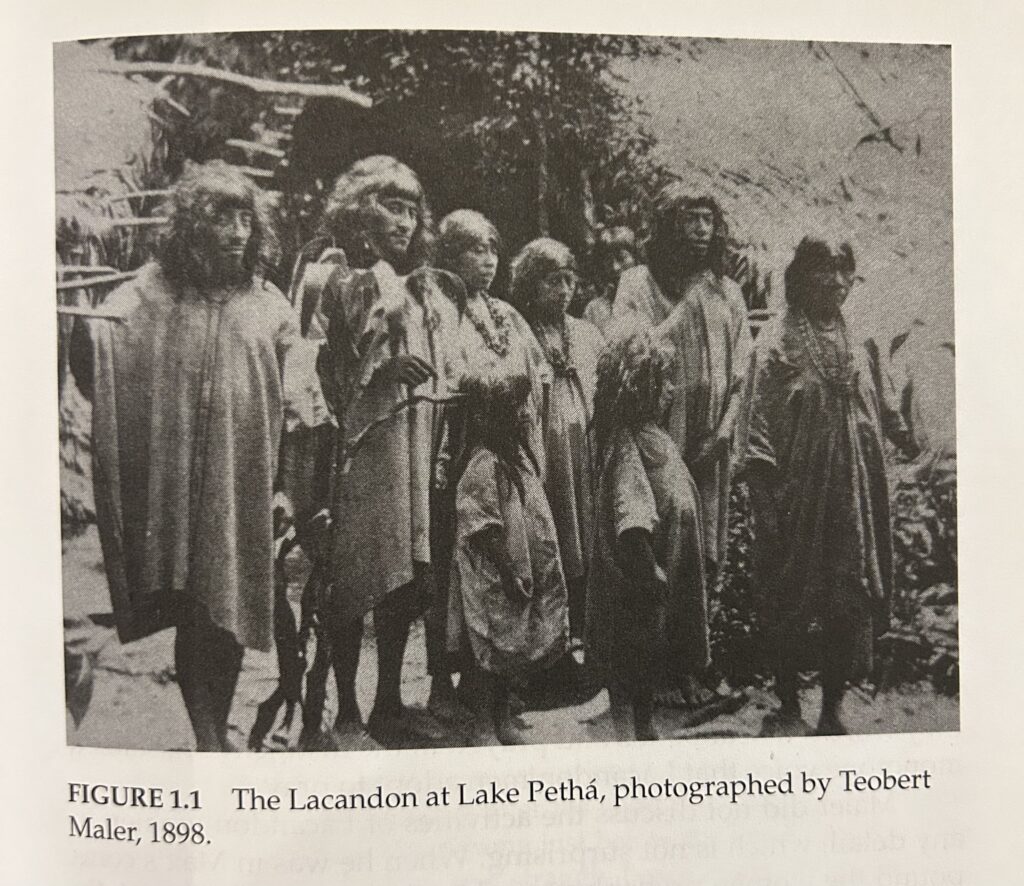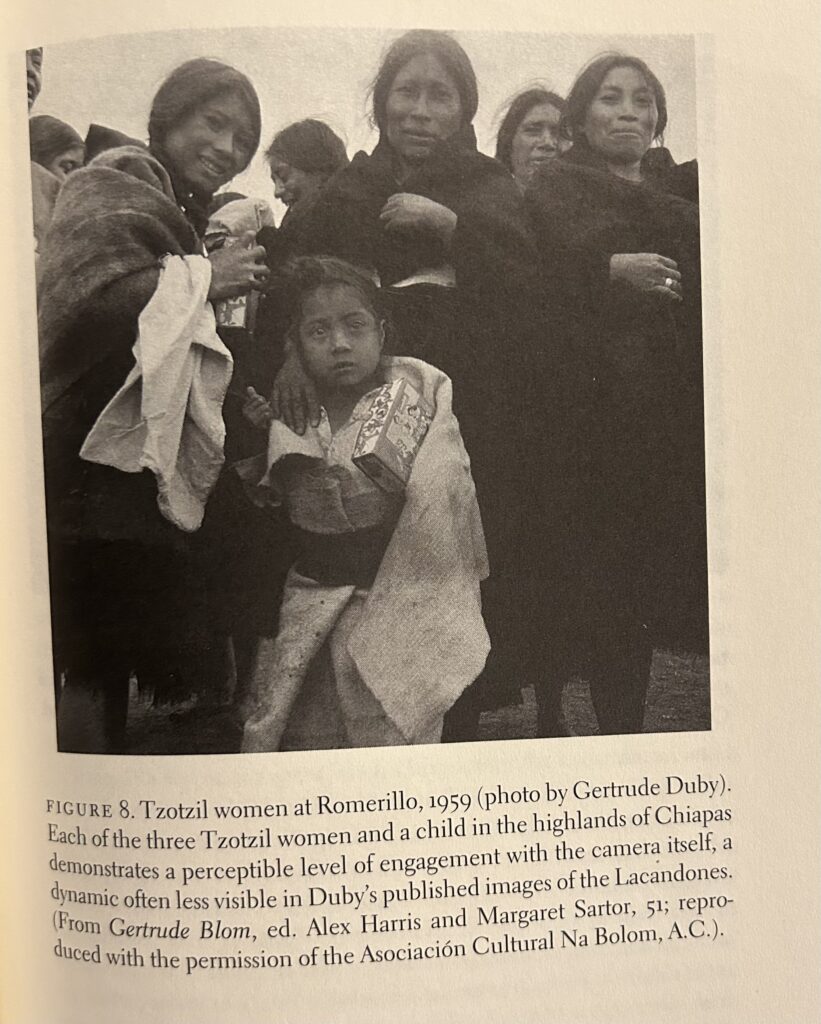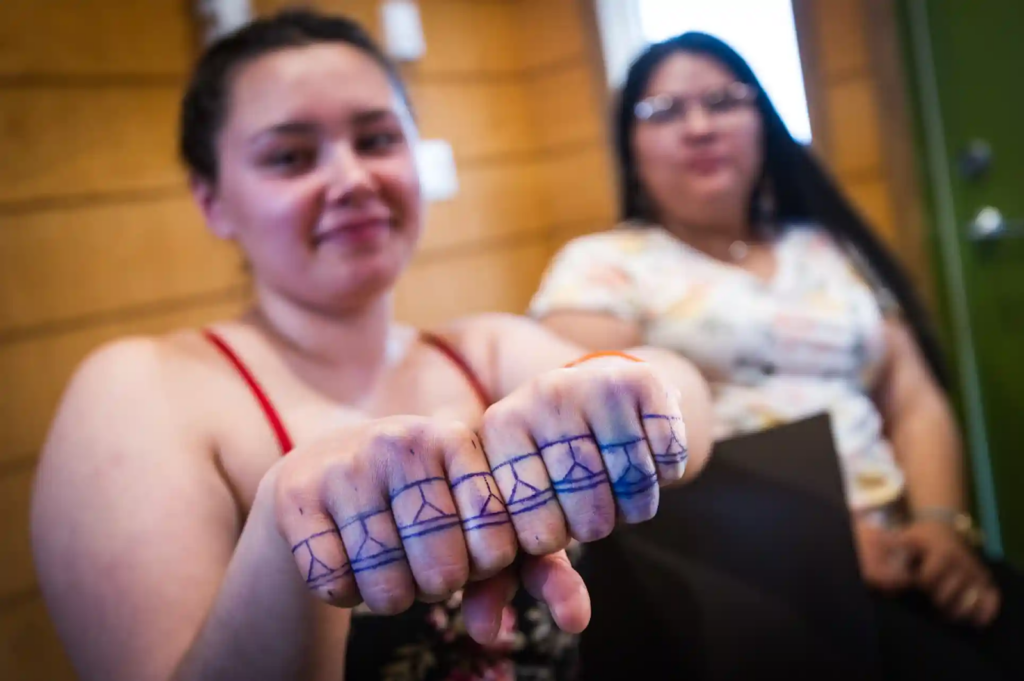By: Kaitlyn Clingenpeel
The following excerpts come from the written fictional experiences of a university student from the US serving as an intern in Mexico. They uncovered a shocking truth and proceeded to publish and expose this truth to try and bring justice to those who were negatively affected by these events as they were understood prior to the discovery of these new facts.
Little could have prepared me for what I would find during the summer that I worked as an intern for the United States Consulate in Mérida, Yucatan, Mexico and how it would come to affect the trajectory of my life and history. My interests in history and the history of the relationship between the US and Mexico brought me to Mexico in the first place and would continue to send me on a path to uncover a lost truth and bring it into the light for the world to see. The story I found that had been “lost” to time calls into question what the two countries know of the events that sugar plantation and the events that followed its discovery were all efforts to bring the truth into the light and move forward by recognizing it and making efforts of reparations and amending the narrative.
Arriving at the Consulate campus in Merida, I was always struck by the stark white building contrasting with the lush greens of the foliage surrounding it. As an intern, I was given menial tasks, but I was genuinely happy to have my foot in the door and knew that this position would bode well for my future. A few weeks into my stay there, I was handed a key card and told that I would be helping to digitize some old archival files stemming back to the 1840s when the Consulate was first founded. I jumped at this opportunity to pour over these documents as they were scanned and this is where I discovered a box that seemingly some hoped would be forgotten to time, and it had been for almost 150 years.
This box contained witness testimonies related to the events of the Monkaab sugar plantation in 1875 following the murder of its American owner, Patrick Edwards. I recalled reading a book about these events for a project in one of my classes on US-Mexico relations, but these testimonies seemed to contrast everything that I knew on the topic. After I left that day, I went back to my accommodations and searched through my files from my previous research. This confirmed that those testimonies did not match up with the accounts I was reading about. Later searching through the documents would reveal correspondences between the Consul at the time, Charles Visage, and his counterparts in the United States that implied that those testimonies I had discovered earlier were potentially put aside and left out of any reports on the case. With this new information being brought to light, I knew I had to take this to someone and I started working my way up the chain of command until I ended up sitting in front of the Consul General, Dorothy Ngutter.
I started our meeting by explaining the current understanding of the narrative of those events as they were without the new documents I had uncovered:
Patrick Edwards was an Irish-American man who had moved to the northeast Yucatan and bought a sugar plantation named Monkaab (meaning sugar in Yucatec Mayan) with the hopes of making a fortune. After a tough hurricane season, which destroyed much of his crop, the year before, he and his hired Maya workers were set to have a great harvest and a productive season. This success was unprecedented in the area and drew the attention of local Mexican plantation owners and led to, according to Edwards, a great deal of jealousy. One of these plantation families decided to take him out of the equation by trying to bring Maya rebels from the Caste War of the Yucatan, which was going on concurrently with these events, to Monkaab. It is believed that a local official, who was bribed by the plantation family, ordered for a path to be cut through the jungle near Monkaab under the guise of plans for a new road. In reality, this path would create an easy access point to Monkaab if any Maya rebels decided to head up that way from where they were hiding out. Patrick Edwards’s last day was marked by just that, Maya rebels marched onto his plantation, captured him and his workers, and murdered all those who could not escape fast enough, including Edwards. When putting together the official reports on the case, Edwards’s initial complaints to the Consul about jealous competitors out to get him were removed from the narrative, which instead focused more on the violent attack by the rebels as the root of the situation at hand. This is the narrative that was presented to Edwards’s wife and three daughters that sparked an international crisis that jeopardized the relationship between the US and Mexico for almost 70 years following his murder and prior to a settlement of the case for $10,000 USD to be paid to Edwards’s surviving family.
I explained to Ngutter that the witness testimonies and other case-related documents found hidden within the archives present a different narrative and that I believed it is one worth telling. One where Edwards was a cruel boss who mistreated his workers and sought to put down his competitors through malicious means. He was willing to do anything to put himself on top, including abusing his workers and sabotaging those around him. Additionally, a majority of these testimonies from local workers were Indigenous Maya people and I felt it entirely necessary that these long-silenced voices needed to be heard. It was also necessary to show the intentionality of the silencing of these voices by American officials.
This was probably the most nerve-wracking part of my entire conversation with her that day. I had no clue what to expect, but I knew that I was going to an American official in a foreign country and telling her that the US was actually in the wrong and needed to admit it and adjust to move forward towards a better future. I never expected her to look at me and say “Okay, you’ve presented a great case to me. So. what’s next? How are you going to tell this story?” and I can imagine the look of shock on my face entirely gave those sentiments away when she did. Ideas started floating around my head as I thought of how to answer her, but there was one thought that kept pushing itself to the front of my brain: It’s not my story to tell. So, that’s what I told her.
Working with Ngutter and the professor from the class where I originally learned about the story of Monkaab, we reached out to the author of the original story about Monkaab, Paul Sullivan, and a colleague of my professor who was based out of a university in Valladolid, Ivan Dzul, which is a couple of hours away from Monkaab, that had been working with locals in the area. With the help of Sullivan and Dzul, we were able to reach out to some of Sullivan’s original informants, Jorge Noh and Yuraima Arceo, and other Maya locals from Dzul’s current project, Patricia Marrufo and Juan Pinzon. With this team: myself, Ngutter, Sullivan, Dzul, and our group of local collaborators, we set out to compile these new witness testimonies and revise the narrative that had been floated around for years leading up to this point.
Sticking to my goal of allowing our collaborators to decide how this story should be told, myself, Ngutter, Sullivan, and Dzul did our best to serve as resources to Noh, Arceo, Marrufo, and Pinzon as they decided how to move forward with the project. With the original title of Sullivan’s book being Monkaab Must Die: The Lost Histories of a Murder on the Yucatan this project quickly became known as Monkaab Revived. As per the choices of our team, the goal of our project became to revise the story as it had been known to incorporate the recently discovered testimonies, call attention to the cover-up of these testimonies, and to included the voices of our local collaborators along the way. The decision was made to create a follow-up to Sullivan’s original book to serve as a sort of second edition and sequel combined into one. This new book, Monkaab Revived: The Revised History of a Murder on the Yucatan, served as an edited volume. We included chapters discussing Sullivan’s original work to uncover what he could about the story of Monkaab, chapters from myself and Ngutter outlining the rediscovery of the testimonies and their implications and the steps we took to pull this project together, and chapters from our local collaborators detailing their experiences with the project and the revised history of Monkaab in their own words. The concluding remarks of this book served as a call for the incorporation of more Indigenous voices and for the use of this book as a guide to do so in the future in other cases.
In putting the final touches on the book, we reflected on our goals of inclusion and accessibility. We wanted to incorporate these often-silenced voices into our project in a way that anyone could read and understand. We didn’t want this book to end up behind university paywalls or be loaded up with so much jargon that you needed a Ph.D. to understand what we were trying to say. So, we used accessible language and tried our best to put those unheard voices at the forefront of our narrative. One of the biggest ways we did this was when listing out our editors/contributing authors. Our collaborators held the so-often coveted position of first on the list, then Professor Dzul, followed by the remaining American contributors. Another way we tried to incorporate silenced voices and accessibility was with our cover. The original cover of Monkaab Must Die featured an art piece of the wetlands of that part of the northeastern Yucatan Peninsula. During a visit to the Monkaab plantation, we were all taking pictures and discussing the mangroves. Dzul managed to snap a picture of an egret among the mangroves before it was spooked and flew off. This was one of the pictures we floated around for the book’s cover. In the spirit of the original cover, Sullivan suggested that we find an artist to create a painted version of the picture. As luck would have it, one of Sullivan’s original collaborators and our team member, Yuraima Arceo, is also an artist that uses a Maya art style that stems back to her ancestors. We used her version of the picture on the cover to further emphasize the importance of incorporating Indigenous voices (and hands) in this project and others.

Through the help of Ngutter and Sullivan, we were able to make sure that this book was published, seen, and recognized by people around the US and Mexico and that US officials acknowledged their wrongdoing in this case, hopefully setting a precedent for similar ones in the future. The book was published in both English and Spanish and copies of the book in Yucatec Mayan were printed to be distributed to the local Maya population around Monkaab. US and Mexican officials have also begun talks on how to proceed with this new information and correspondences have also started to come in to our team asking for help with revising other narratives and bringing those long-silenced voices out of the shadows. This was in no way how I expected that internship at the US Consulate in Merida to go, but I am grateful for these experiences and how they have shaped my career and the future for the better.
Author’s Note
This fabricated account of the Monkaab sugar plantation and the murder of Patrick Edwards almost completely mirrors the true events of the murder of Robert Stephens that took place at Xuxub. What happened there is chronicled by Paul Sullivan as he seeks to find the truth of the events in his book Xuxub Must Die: The Lost Histories of a Murder on the Yucatan (2004). At the end of his introduction, “Terrible Beauty,” Sullivan admits that he never could crack the whole truth of the events that took place in October of 1875 at Xuxub due to a lack of information and instead has compiled all of the known facts of the case to set the stage and provide enough context to get as clear of a picture as is possible (2004). This admission from the start struck me and set the stage for my imagination as I tried to envision how the story would change with just a few more pieces of information. Could one more document have entirely changed the canon of this history? Whose voices were never heard on the situation? What would they say if given the chance? And thus, this imaginative narrative was born to explore a possible postcolonial future where more pieces fell into place on this puzzle.

The Truth Behind the Fiction
Robert Stephens purchased the Xuxub sugar plantation and had been working hard to make it a successful business venture (Sullivan 2004). According to Stephens’s accounts of the events leading up to his death, he eventually gained enough success that a rival plantation family, the Ureclays, grew jealous of him (Sullivan 2004). The Ureclays were a powerful family that were bribing local officials to start to clear a path to Xuxub and to look the other way if or when Maya rebels made their way up that path and onto the Xuxub plantation (Sullivan 2004). Stephens raised his concerns with officials in Mexico, but they were waved off and disregarded, leaving Stephens in the same position he was in before he went to them (Sullivan 2004). In October of 1875, rebels did make their way up the path and onto Stephens’s plantation where they end up murdering him (Sullivan 2004).
The American Consul at the time of the murder of Stephens, Alphonse Lespinasse, purposefully sought out workers and other locals that knew Stephens and would speak kindly of him for the official record of events (Sullivan 2004). Based on his research of the available information and the interviews he conducted, Sullivan speculates that Lespinasse tried to paint Stephens in a positive light after his murder (2004). Those interviewed on the record spoke of him as a kind boss who treated him with respect and that would take in workers who had been mistreated by other plantation owners, such as the Urcelay family (Sullivan 2004). Some Maya people and other local workers, however, did not ally themselves with this version of Stephens. They saw him as harsh, cruel, and abusive to the Mexicans and Indigenous people that worked under him (Sullivan 2004). The possible purposeful omission of this information is what sparked the idea for the discovery of some “missing” or “lost” testimonies that were in fact left out of the official records intentionally.
This case is one that created a large amount of uproar on the American side. The Stephens family continued to fight for justice for the loss of Robert. It continued to plague US-Mexico relations until it was settled almost 70 years later in 1943 when an agreement was reached at a Claims Convention and a total of ten thousand dollars was paid out to the family (Sullivan 2004). With this settlement, the cries of the Stephens family were quieted and this allowed for both the United States and Mexico to put the situation behind them and for the story of what happened at Xuxub to truly die and become lost to time in their eyes (Sullivan 2004). As previously stressed, the Maya people involved in this case have not forgotten these events, but their voices are quieted behind those of Mexican and American officials and history writers (Sullivan 2004; Trouillot 1997).
Theoretical Framework and Background
Violence
Mexico gained its independence from Spain in 1821, but the new mestizo population and the Indigenous populations remained at odds (McArdle Stephens 2017). This fighting eventually escalated into a Caste War by the end of the 1840s and lasted until 1901. The violence displayed during this time is used as their defining characteristic to paint Indigenous people in a negative light both in history and the specific accounts of the events of Xuxub (McArdle Stephens 2017; Sullivan 2004). This peasant revolt against the ethnic and economic oppression of the Yucatecan elite served as a perfect backdrop for the events at Xuxub to be pushed under the rug (McArdle Stephens 2017; Sullivan 2004). Placing blame on the violent rebels attempting to free themselves from the continued oppression of Mexico’s colonial remnants served as a scapegoat for the root causes of the attack on Stephens, a way to maintain Mexico and US relations, and as a way to continue to put down those at the bottom of Mexican society for years to come (Fanon 1963; McArdle Stephens 2017; Sullivan 2004). The anti-colonial use of violence by Maya rebels during the Caste War mirrors the events in Algeria as described by Fanon (1963; McArdle Stephens 2017). These Indigenous peoples, who were violently oppressed during the Spanish occupation of Mexico and viewed as less-than-human, continued to experience those same sentiments after the colonizers left and Mexico gained its independence (Fanon 1963). This sets the stage for the reactions to the Xuxub murders that would take place in the middle of the events of the Caste War.
Subaltern Studies
While subaltern studies originated in India, its ideas are certainly applicable to the events that occurred at Xuxub as well. As described by Gayatri Spivak in her essay “Can the Subaltern Speak?” (2010), societies live in a hierarchy of the elite and the subaltern, with the elite being broken down into two categories: foreign and local, with the foreign elite holding the top position. The oppression of these subaltern groups often serves as a form of imperialism (Spivak 2010). In Spivak’s piece, she outlines Indian women as the subaltern class, but here the Maya rebels take up that role (2010; Sullivan 2004). The descriptions of the causes of the Caste War (McArdle Stephens 2017) align with Ranajit Guha’s description of peasant revolts (1983) as well. According to Guha, the subalternity of a group of people is solidified by the structures put into place by the colonizers, thus turning this oppression into tradition and making the breaking of that tradition an explicit violation of societal norms (1983). This violation of the norms by Maya rebels was used as a method to further put them down and place blame upon them, thus leading to further silencing (Guha 1983; Spivak 2010). This creates what Chakrabarty referred to as a Minority History and pushes for the idea that there are histories that are more important than others (2002). Rather than working to preserve the plurality of history, these “lesser” histories are often written out or ignored when it comes time to set a history in motion (Chakrabarty 2002; Middleton 2023).
The Production of History
This story is a clear example of the fact that the US and Mexico hold the authority on what pieces of history in situations like these are focused on (Trouillot 1997). Everyone knows about and wants to visit the major archaeological sites of the Indigenous populations of Mexico, but people are usually less familiar with the Indigenous perspectives post-Mexico’s independence from Spain and do not care as much for these perspectives. This reflects who is writing the history and who is being silenced here and in other similar cases (Trouillot 1997). The US wanted to spin a tale of a kind and successful man being taken out by violent natives and Mexico chose to push these events to the background to focus on the pieces of Indigenous history that can be used for tourism and boosting the economy.
Accessibility
One of the key discussions we have had throughout the semester for me was our discussions about accessibility. The availability and accessibility of information has come up many times throughout our discussions and assorted voices throughout the semester, along with discussions in other classes. One key example of this that I was faced with this semester came from my role as a teaching assistant in the course ANTH 270: Living Medicine. My students read two books throughout the course of the semester A Heart for the Work: Journeys Through an African Medical School by Claire Wendland (2010) and Complications: A Surgeon’s Notes on an Imperfect Science by Atul Gawande (2002). The book by Wendland is an anthropological ethnography and is clearly written with an academic audience in mind, but Gawande’s book is written for a more mainstream audience. Seeing the difference between the students’ abilities to understand the two books in our recitation discussions further cemented the necessity for accessibility within this project.
When developing this imagined future for the story of Xuxub and how the information about the fictional “Monkaab” would be disseminated, I knew that I wanted to try and find more accessible ways to get the story out there. I had never heard of Xuxub prior to checking this book out. While written in a slightly more accessible manner than most books centering around theory, the book itself was hidden behind university paywalls and would likely not be very accessible to the layperson. I wanted to see some kind of artistic expression and collaboration play into how this lost history was put out into the world as well. So, I chose to have the discoverer seek out local collaborators who would have knowledge of the area and its history to produce an accessible work designed for a more mainstream audience to put this along with a Maya artist local to the area where Monkaab would have been located to paint the wetlands of that part of the Yucatan for the cover of the revised story.
Conclusion
One of the pieces of this fictional story is just how optimistic it is. I found myself doubting if this is actually how it would play out if a similar discovery was made about Xuxub. Still, in this fictional narrative, where anything could happen, I was able to explore how things could go with minimal obstacles in place to create a version of a postcolonial future that presents the ideal outcome. Shifting to a more accurate representation of a historical narrative and a method of history production that incorporates lost and far too often silenced voices in a collaborative way should be something that we see as more normal. Removing the narratives that are written solely by the colonizers brings forward the voices of the oppressed. Throughout working on this piece, I found myself thinking of the work of Ann Stoler on Imperial Ruins and Ruination (2016). In particular, when she addresses the questions prompted by Derek Walcott in his piece “Ruins of a Great House” (1990): “What is the rot that remains when the men are gone? What forms does rot take? What does it corrode; what interior spaces does it touch; and how does it seep through the social and material fabric where it remains?” (Stoler 2016, 361). I would like to close this out by calling others to consider another question prompted by these ones and the work done here in this piece to highlight silenced voices: What can grow out of the rot when given the chance to have the sun shine on it once again?
References
Chakrabarty, Dipesh. 2002. “Minority Histories, Subaltern Pasts” in Postcolonial Passages. Oxford: Oxford University Press, 229-242.
Fanon, Frantz. 1963. “On Violence” + “Conclusion.” in The Wretched of the Earth. New York: Grove Press, 1-62, 235-239
Gawande, Atul. 2002. Complications: A Surgeon’s Notes on an Imperfect Science. New York: Picador.
Guha, Ranajit. 1983. “The Prose of Counter-Insurgency.” in Subaltern Studies II, edited by R. Guha. Delhi: Oxford University Press.
McArdle Stephens, Michele. 2017. “Caste Wars in Yucatán.” in Oxford Research Encyclopedia of Latin American History. Accessed 24 April 2023. https://oxfordre.com/latinamericanhistory/view/10.1093/acrefore/9780199366439.001.0001/acrefore-9780199366439-e-386.
Middleton, Townsend. 2023. “Subaltern Studies: From South Asia to Latin America,” ANTH 461 Class Notes and Discussion, February 23.
Spivak, Gayatri. 2010 “Can the Subaltern Speak?” revised edition, from the “History” chapter of Critique of Postcolonial Reason, in Can the Subaltern Speak?: Reflections on the History of an Idea, edited by R.C. Morris, 21-78. New York: Columbia University Press.
Stoler, Anne Laura. 2016. Duress: Imperial Durabilities in Our Times. Durham NC: Duke University Press
Sullivan, Paul. 2004. Xuxub Must Die: The Lost Histories of a Murder on the Yucatan. Pittsburgh: University of Pittsburgh Press.
Trouillot, Michel-Rolph. 1997 Silencing the Past: Power and the Production of History. Boston: Beacon Press.
Walcott, Derek. 1990. “Ruins of a Great House,” In Collected Poems: 1948-1984, 20. New York: Noonday.
Wendland, Claire L. 2010. A Heart for the Work: Journeys Through an African Medical School. Chicago: The University of Chicago Press.
The Yucatan Times. 2023. “Yucatan Mangroves: the ideal habitat for the Melipona Bee.” The Yucatan Times website, February 13. Accessed April 25, 2023. https://www.theyucatantimes.com/2023/02/yucatan-mangroves-the-ideal-habitat-for-the-melipona-bee/












